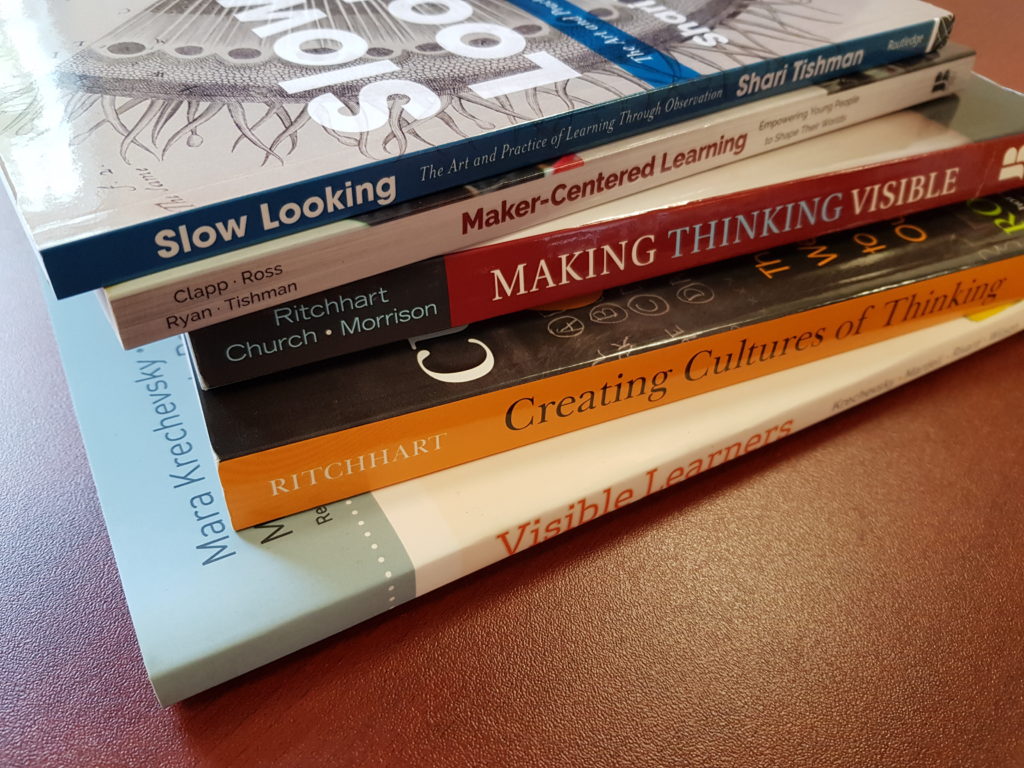Making Thinking Visible
Thinking Routines are “simple procedures, usually consisting of only a few steps,
[and] provide a framework for focusing attention on specific thinking moves
that can help to build understanding.”
— Ron Ritchhart, Mark Church, and Karin Morrison
(Making Thinking Visible: How to Promote Engagement, Understanding, and Independence for All Learners, p. 45, 2011)
For decades, Project Zero has explored the idea of thinking dispositions and ways thinking patterns develop. Out of that research has come innovative pedagogical tools called Thinking Routines.
In schools, early childhood centers, and museums around the DC region, Thinking Routines have taken hold as a powerful means for deepening understanding of complex topics being taught. Over the past few years, Project Zero researchers, inspired by the power of these interventions, have developed Thinking Routines beyond those that were initially created in the Artful Thinking and Visible Thinking projects; for example, Global Thinking Routines, focused on nurturing global competence; Agency by Design Thinking Routines that foster a maker mindset; and Ethical Thinking Routines, coming out of the Good Project, that encourage young people to develop empathy and make ethical decisions in the world.
Educators who have taken on Thinking Routines in the DC area have shown remarkable capacity not only to adopt those they find particularly useful for zeroing in on they type of thinking they want to develop, but also to adapt routines to meet their needs. We’ve even seen some teachers develop their own!
At WISSIT, our annual summer institute, and DC-Project Zero events, which are open to everyone, we often engage participants in Thinking Routines and reflect on their use in various contexts. The book Making Thinking Visible is a valuable resource for educators as it provides the background research and provides various examples of teachers using Thinking Routines. Other helpful resources are the Visible Thinking website and an animated video overview of Thinking Routines.
